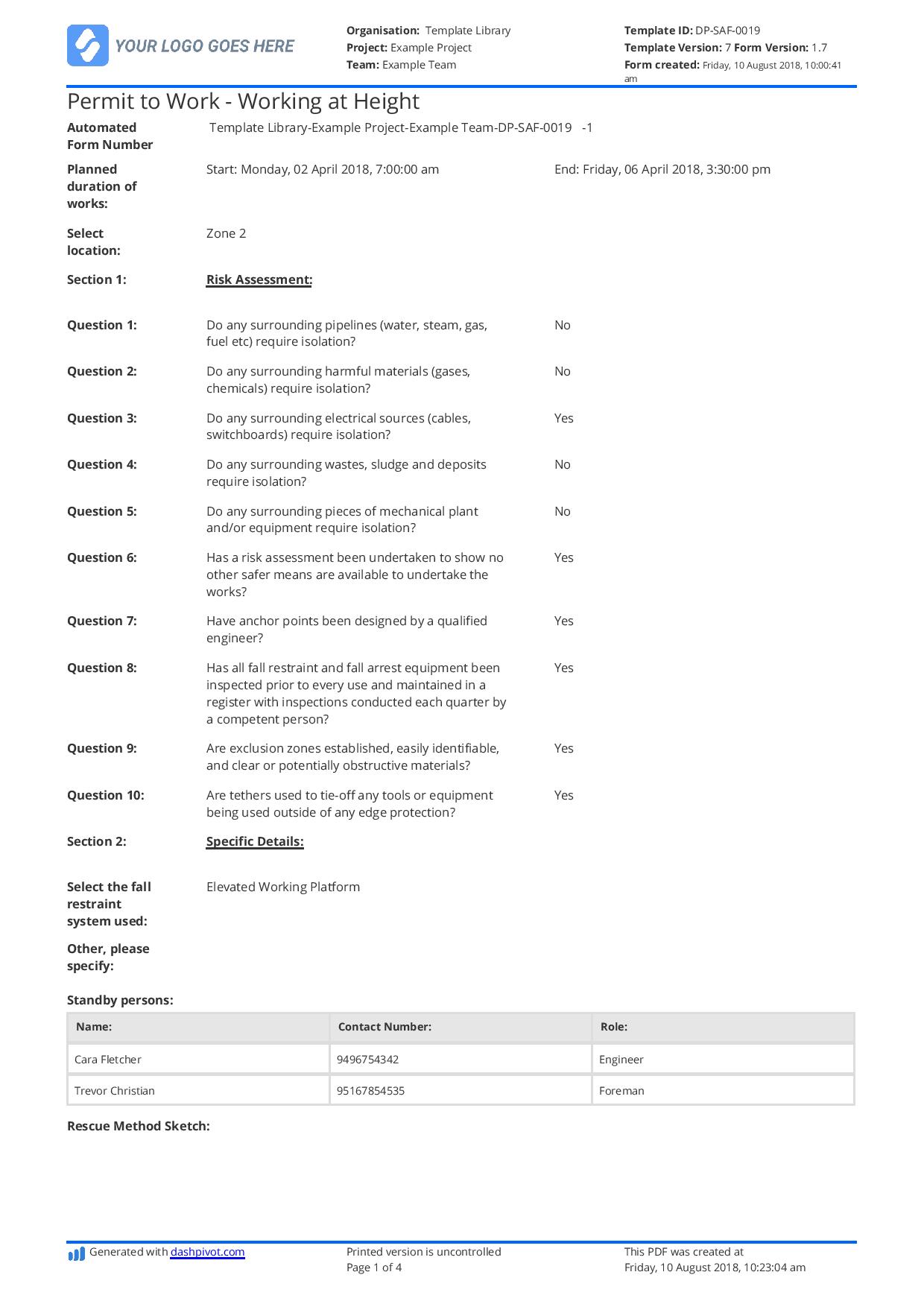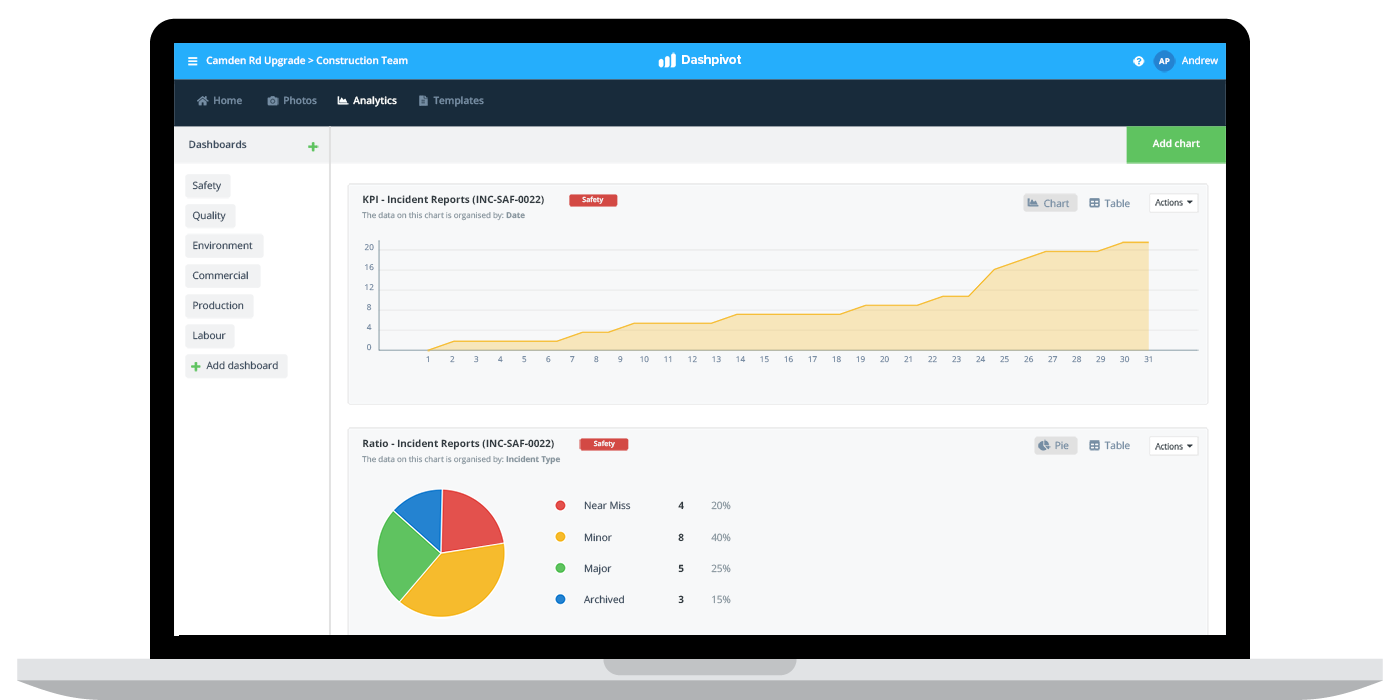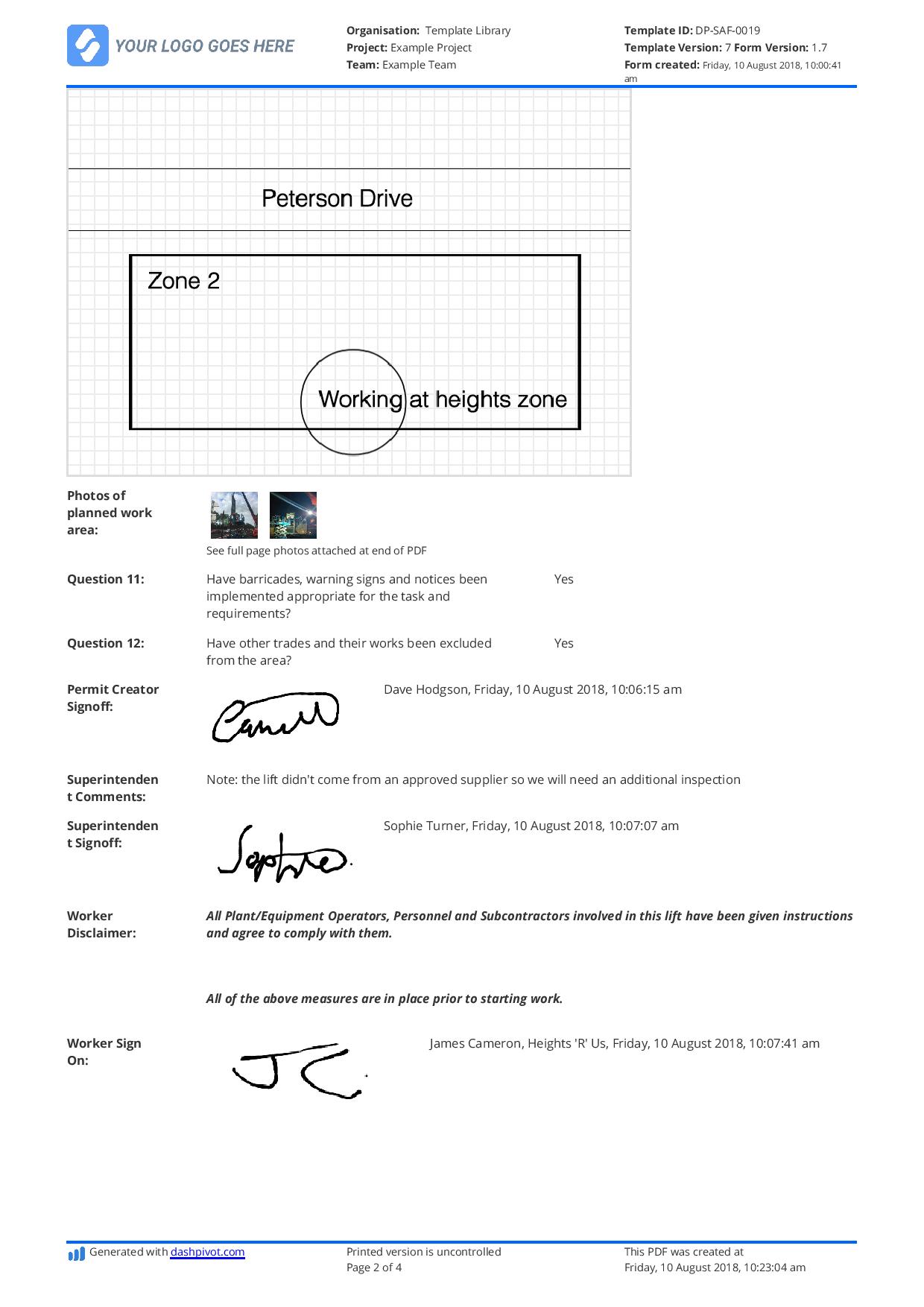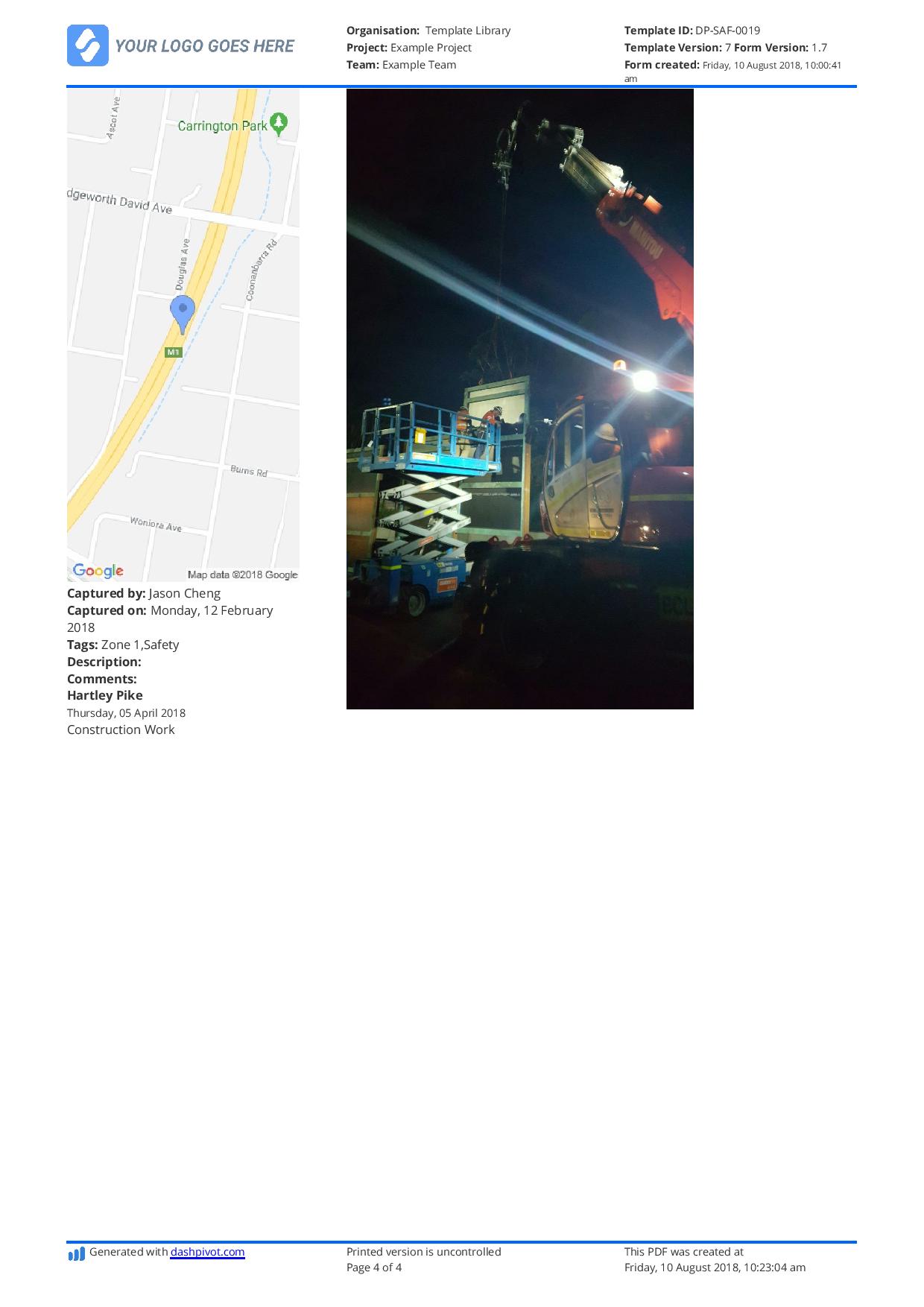Safety – Working at heights permit

Working at heights permit: What you need to know (and include)
A bit about working at heights
Working at heights is still one of the most dangerous activities undertaken by workers all over the world on sites all over the world.
In Australia alone, between 1 January 2003 and 31 December 2015:
- 359 workers were killed following a fall from a height—11% of all workers killed over this period.
- Half of these falls involved falling three metres or less.
- The greatest number of fatalities involved falling from roofs (59), ladders (54), vehicles (27) and horses (33).
- Workers aged 45 years and over made up 65% of those who died.
- The construction industry accounted for 37% of falls-related fatalities.
The frequency of people working at heights forms part of these sobering statistics (relative to other hazards); inevitable accidents cause another portion; but there is still a significant percentage of these numbers which could be reduced through better working at heights processes and practices.
Workers also tend to be nonchalant about the hazards they face regularly, which is proven by the fact that the largest contributing factor to falls from heights in the last 2 years has been the improper use of ladders - causing over 30% of falls.
While there are bound to be some falls from ladders and other incidents, Australia companies alone lose over 108,000 recordable days per annum due to falls in the workplace and the average days lost time due to a fall is 93 days.
While working at heights permits still form one of the most commonly taken tickets and classes in the industries, it's clear that companies and projects must work harder on improving the way that their people work at heights and manage the risks associated with it.
At the moment, working at heights are causing people and companies a lot of headaches - both figuratively and literally.
The role of the working at heights permit
Working at heights tickets and training are one mechanism for improving worker safety, but they serve more as a checkbox and compulsory item for working at heights and less of a mechanism for helping people and companies avoid working at heights negligence and accidents.
Working at heights permits are a very good precautionary step for managing the risk associated with working at heights.
They encourage (and force) workers to be aware of the risks associated with conducting works at heights, and also make them go through a series of steps which when done properly can drastically reduce the change of silly mistakes and preventable falls.
A good permit to work for working at heights includes a detailed risk assessment of the potential hazards and risks associated with any working at heights, and also provides space for people to note details, provide a list of standby persons, and to signoff on the permit when it is agreed that it is safe to move ahead with the work.
The permit process can be followed up with a Job Hazard Analysis for working at height for your team to reference before they start any work at a specific project or location.

Use this smart digital working at heights form for free.
So if we use a good working at heights permit and have our workers fill it out, what else can we do?
Working at heights permits should form the backbone and infrastructure for your working at heights plan. This creates structure for how your people approach and conduct working at heights.
There are however, some other issues and problems to be aware of:
Culture - There are still many people on site who disregard the dangers of working at heights completely. This type of behaviour and sentiment is completely unacceptable, as it filters throughout organisations and sites and results in people feeling pressured to not do the right thing or bring attention to potential problems.
Lack of experience and understanding of the hazard - While a lot of people have 'done' working at heights, not many people specialise in it or have a deep subject matter expertise on it. Most workers on site specialise in their trade or role, and so where and how people work is usually an afterthought.
Holding people accountable and responsible - Similar in vein to the lack of experience, working at heights is often a grey area where no one can claim or hold full responsibility for the issues or approach to working at heights. We need to stop looking at falls as 'accidents' and start searching for root causes and responsible parties.
Government regulation - Government regulation has helped in the past, and it has seen large advancements in area like asbestos safety management. New regulation regulating working at heights may help, but implementing it across the various types of work performed at heights will be difficult.
The temporary nature of work - For some reason, work which is short in duration and ad-hoc always seems to demand less attention in terms of safety preparation and incident prevention. It only takes half a second to fall of a roof or off a ladder, and in fact, it's more likely when someone is juts doing a quick job or rushing to complete a task.
These (amongst others) are also blockers and inhibitors for improving working at heights safety. It's going to take a multi-pronged 'attack' to some of these ingrained issues and practices to move the needle.
Is your safety function in need of streamlining and improvement?
The working at heights incident rate and general issues run deeper and span across a number of safety functions. While safety is more of a thought and priority than it ever has been, most companies still struggle to maintain high safety standards across their daily operations and standard operating procedures.
Part of this problem can be solved with the streamlining of how forms, permit and safety performance are managed on site.
As it stands, your safety efforts and function is fragmented across standalone checklist apps, word docs, excel spreadsheets and personal anecdotes.

Safety management software like Dashpivot brings all of these daily processes into one consolidated safety platform.
With Dashpivot, you can standardise all of your safety forms and deploy them to projects and teams. Once deployed, engineers, foremen and project managers can manage all of their forms and data capture from phone or tablet on site, which encourages them to fill in their forms and do the right checks.
Once forms are completed, instead of floating around on hard drives or in car seats, the forms are automatically uploaded into the cloud where safety and project managers can manipulate the data into dashboards and graphs to get real-time updates and insights across projects.
For example, if you have your workers filling out Dashpivot working at heights permits on their tablet or mobile, you can aggregate that information into graphs to see how many permits are being created and how many incidents there have been.
This type of insight gives management more control and understanding of what's going wrong - and enables them to take steps towards improving.

Working at Heights Permit template
Mitigate the risk of dangerous and potentially fatal falls - and make the permit approval process seamless. See the template →


